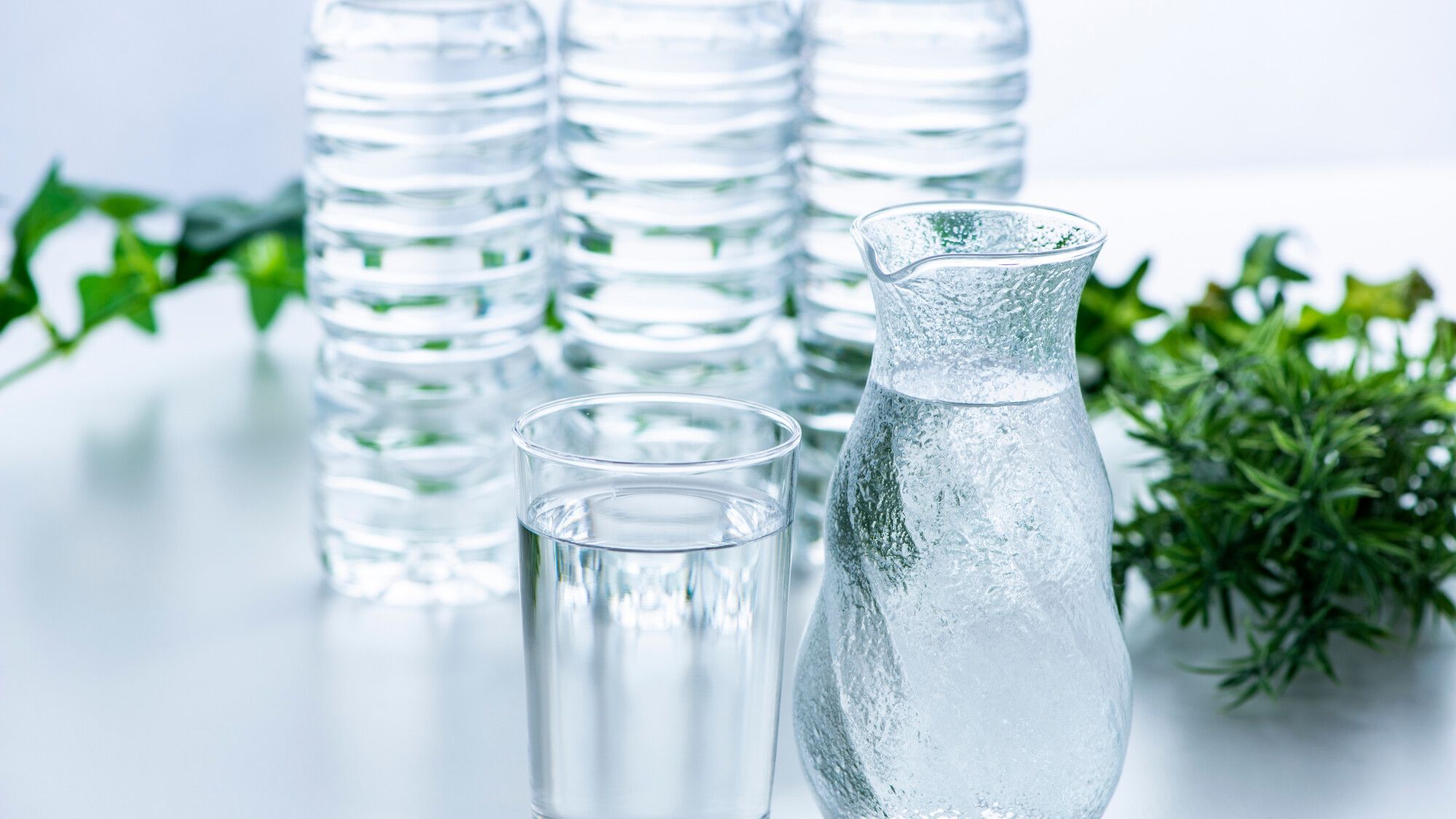The fresh water that flows from our taps is the most controlled food product and, in mainland France, the periods in which the authorities advise against its consumption are exceptional. However, the French remain big buyers of bottled water: almost 9 billion liters are sold every year, or 133 liters per inhabitant (Source: Eau Minérale Naturelle Europe, 2022). In practice, consumption habits are often mixed: 66% say they drink every day from the tap, 48% from the bottle, 72% alternate (Kantar survey 2023). “The older we are, the more we prefer the tap,” notes Nathalie Davoisne, spokeswoman for the Water Information Center, which represents the drinking water distribution industry And it is among the richest that we consume the amount minimum of bottled water. ” And what difference does it make to our health?
Bottled water: a water industry in trouble
Natural or treated spring mineral waters
While consumers are increasingly paying attention to the quality of food, the argument of the greater purity of spring water has long been attractive … until the revelation that a large part of the water sold under the “natural mineral” or “source” label has been purified. treatments similar to those used for tap water. Practices absolutely prohibited. Nestlé Waters (Perrier, Vittel, Hépar or Contrex) reported to the authorities only in 2021, and it was not until January 2024 that consumers reported it thanks to an investigation by Radio France and the newspaper. The world. A year before, non-compliant practices (mixing of waters, etc.) for the Auvergne waters of the Alma group (Cristaline, St-Yorre, Vichy, etc.) were revealed by the information site Médiacités , after an alert launcher. had allowed an investigation to be launched by the General Directorate for Competition, Consumers and Fraud Prevention.
Bottled water not so virtuous
What to remember? First, it is no longer possible to guarantee that the deep underground tables are free of pesticides and pathogenic bacteria. So the consumer was deceived because, unlike tap water, taken from ground water or rivers, the regulation prohibits any treatment intended to make bottled water drinkable, the water sold hundred times more expensive than running water. Contacted by Our timethe management of Nestlé France tells us: “We have undertaken the following actions: obtaining confirmation from the authorities of the conformity of the level of microfiltration used, withdrawal of non-regulatory protection measures (ultraviolet treatments and active carbon filters), suspension of some wells”.
Among the black points of bottled water, plastic pollution from packaging (40% of the bottles are not recycled, figures from the Ecological Transition Agency), which degrade into microplastics that pollute the earth and water, substances that finally ingest the animals that we consume. Not to mention the huge carbon footprint for manufacturing and transporting these billions of bottles, and the air pollution linked to the trucks that deliver them. The ecological cost for the planet and, by boomerang effect, for our health, is rarely estimated at its right level.
Actions to limit the risks if you drink bottled mineral water
For bottled water fans, vigilance is required when it comes to storage. Because under the effect of heat, plastic nanoparticles migrate into the liquid. A recent American study* caused a stir. It counted an average of 240,000 particles per liter of water tested! These nanoparticles can migrate through the blood to the brain, without our impact being fully measured. However, no one can guarantee that the packages have not been stored in overheated hangars, or in the sun in the supermarket parking lot.
Prefer glass bottles is expensive and not always practical. Think carefully, at least don’t leave plastic bottles in the car and keep them cool at home.
Tap water: very controlled but…
What types of pollution for tap water?
What about tap water? Organic materials, some degraded pesticides, industrial discharges: possible contamination is monitored and depends on where you live. Treatments to make water drinkable, especially chlorine, very effectively eliminate bacteria and living germs, allowing you to drink with confidence. “The regulations in France are strict, improving the quality of tap water, for example, the maximum content standards have been lowered considerably since 1999,” points out Professor Yann Neuzillet, urologist and oncologist at the hospital. .
In the longer term, due to cumulative effect, some treatments and pollutants are not always harmless.. “Drug residues, especially antibiotics used in reproductive and contraceptive hormones, are a problem, especially because they are not part of systematic controls,” warns the urologist. Pesticides are the most scrutinized, but only some are measured. Sometimes with unpleasant surprises. The metabolite of chlorothalonil, a degraded fungicide banned from 2020 and classified as a suspected carcinogen, was, for example, detected in a third of the water network distributed in France, revealed a report from the National Agency of Health Security (ANSES) in 2023. .
“The quality of water taken from groundwater depends on agriculture, industry, or linked to nearby disks”, notes Professor Neuzillet. PFAS, or “eternal pollutants”, synthetic chemical compounds of products that have been widely used in industry, are now removed, “obliging sometimes to disconnect the network from the points contaminated collection. to connect it to another network,” says Dr. Patrick Lemiter, vice president of the Environmental Health Network. He calls for European regulations to be updated to better take into account the “cocktail effect” pollutants between them.
Action to limit the risks of tap water contamination
To protect their health, more and more French are filtering their tap water. Is it effective? “Commercial filters work essentially to keep heavy metals,” explains Professor Neuzillet. This is useful in older homes where the pipes are still routed. These models require that the filters are cleaned properly so that they do not become breeding grounds for microbes. We also find in the market osmosis units, machines designed to limit lime, nitrates, lead and pesticides. A survey of 60 million consumers warned in 2018 of a risk of excessive demineralization of these expensive devices.
It’s simpler: “Since pollutants tend to stagnate in the pipes, it’s better in the morning to let the water flow a little before using it. You can also fill the tank of the coffee maker the night before, and keep a pitcher of water in the refrigerator“, advises the doctor. Advantage: the cold also eliminates the taste of chlorine.

